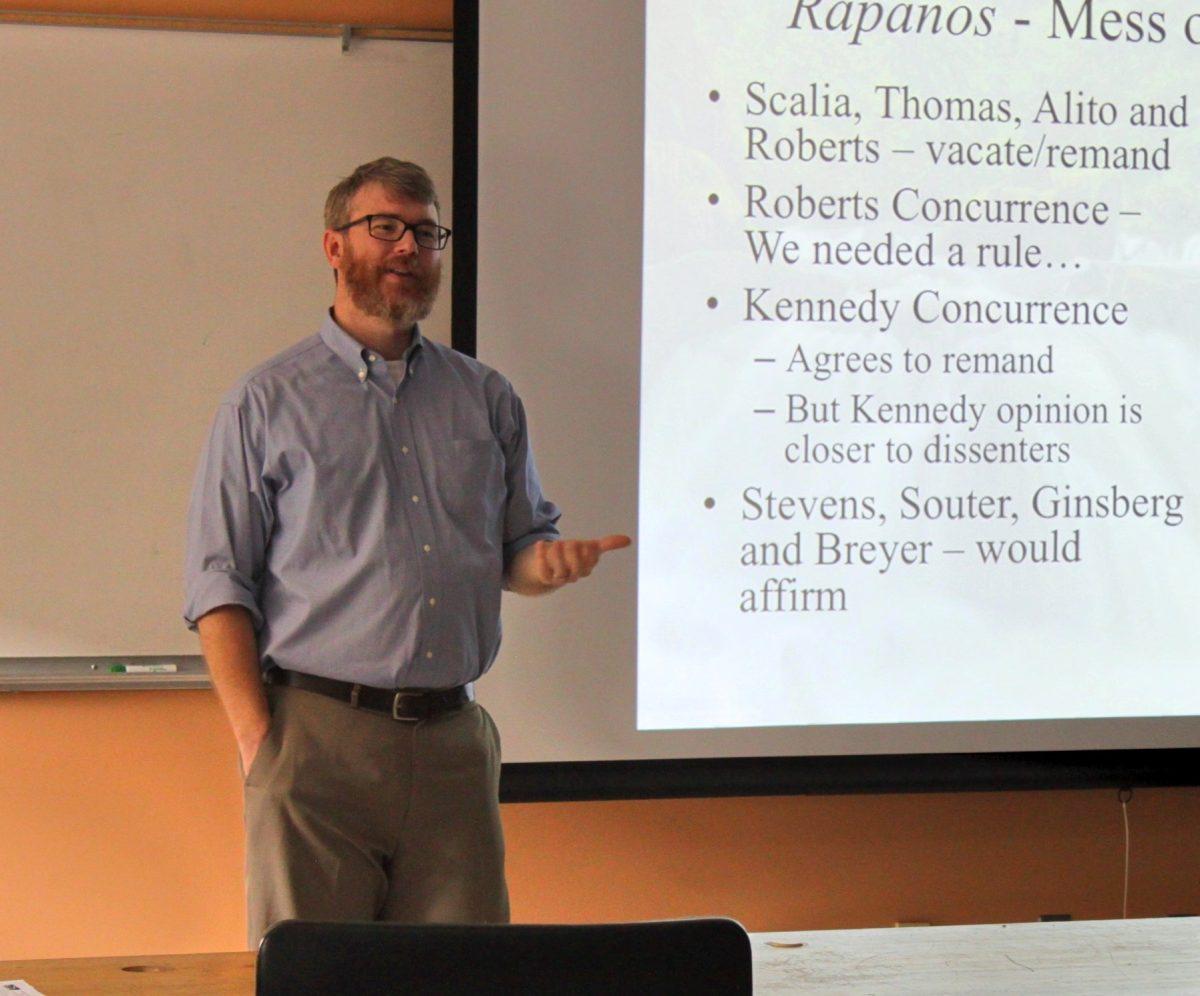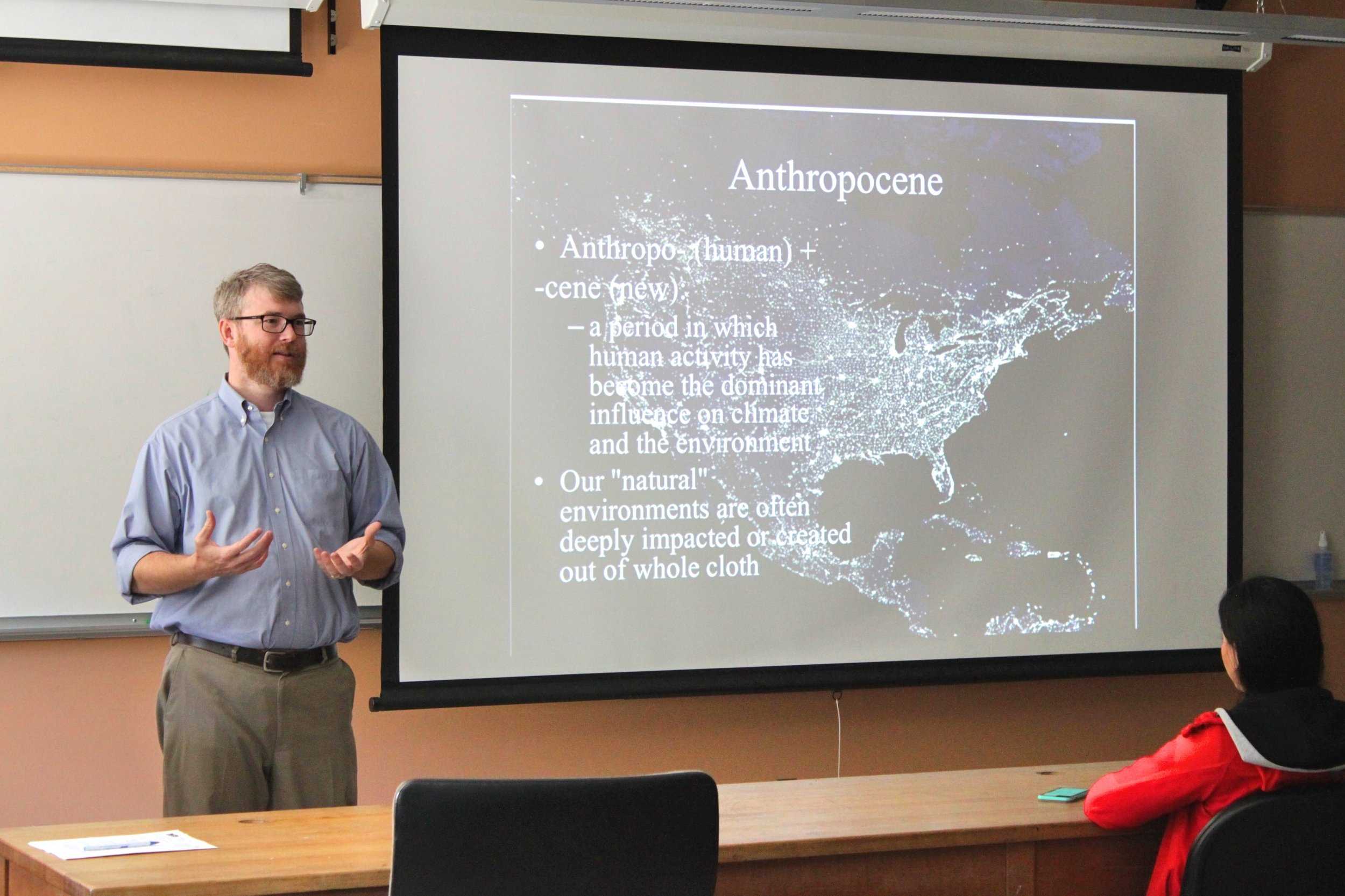Karrigan Börk, assistant professor at the University of Pacific spoke at Sonoma State University on Wednesday. Börk’s lecture ‘Ditching Our Innocence: The Clean Water Act in the Age of Anthropocene’ was apart of the the John and Mary Louise Riley Geology Lecture Series, sponsored by the Sonoma State Geology Club.
Due to recent federal legislative changes ditches are no longer protected under national the Clean Water Act. This has sparked disapproval and concern in the environmental community. Missouri Farm Bureau has promoted #ditchtherule in efforts to express objection to the new outlines of the water policy.
Börk described his last experience at the Grand Canyon where he felt connected to the environment.
“The epitome of nature and wildness is very much a manufactured [or] created experience by engineers upstream. I submit that most places we experience have a very strong human fingerprint,” Börk said.
Some cities may have an overwhelming human fingerprint where it seems to decrease nature, but nature is still present and thriving. This is a concern for environmentalists as explained in the lecture. Börk’s focus was to explain what the Clean Water Act protects, what the environment could look like under theTrump administration and common myths regarding the balance of nature.
Börk explained that the new regulations, which exclude man made habitats, were written by the Environmental Protection Agency, or EPA, and the Court of Engineers. The executive order has created questions of what the exact changes are and what their implications may be.
According to a White House transcript from Feb. 28, President Trump labeled the ‘Waters of the United States’ rule one of the worst examples of federal regulation. Calling the policy a disaster, Trump noted that the rule is opposed by many farmers and agricultural workers across the country.
Trump’s view is not an outlier, since many people have the same separatists viewpoint when it comes to nature and people.
There are many who view nature as an entity that can and will continue to thrive on its own, thus creating a hypothetical wall between people and nature which supports the separatist viewpoint.
“Nature without us moves towards a climax. [It] maintains balance. Like a forest fire coming through, that forest will rebuild itself in the same way,” Börk said. Börk explained the balance of nature myth and its problematic consequences.
Börk explained science does not compel the new changes. Data from the EPA and other sources prove the dangerous effects the new law may cause.
“About 22 percent of watershed drain to roadside ditches before they reach a natural water body. So an awful lot of our water passes through these ditches which the EPA is now linked to give up,” said Börk.
“Since water does pass through roadside ditches I feel that they should be covered by the [Clean Water Act] because once those ditches meet up with the mainstream, all the pollutants and bacteria such as e.coli are now infecting the rest of the water supply,” said Noël Skocko, geology major and sophomore that attended the event.
“Vegetation likes the moist conditions in the bottom of a ditch and in time can fill the ditch if not removed early enough. One consequence of this is that the groundwater table will rise and moisture content will increase in the road structure,” said senior and hutchins major Danielle Sprouse. “If the ditches aren’t covered under the Clean Water Act, shoulder deformation and pavement cracking can occur which can result in vehicular problems and accidents.”
Ditches are just one example of the problem concerning the changes to the Clean Water Act. As a result of the recent changes, anything manmade encompases non-protection and could bring a notable change to our environment.
There will be one last lecture at Sonoma State, by Dr. Charles Lesher of UC Davis, on May 1 at noon in Darwin 128. Lesher’s talk will be ‘High Pressure Research in the Earth Sciences: Simulation of the Deep Earth Using the Multi Anvil and Brilliant X-Ray Beam.’





![[Both photos courtesy of sonoma.edu]
Ming-Ting Mike Lee stepped in as the new SSU president following Sakakis resignation in July 2022](https://sonomastatestar.com/wp-content/uploads/2024/04/CC4520AB-22A7-41B2-9F6F-2A2D5F76A28C-1200x1200.jpeg)



























